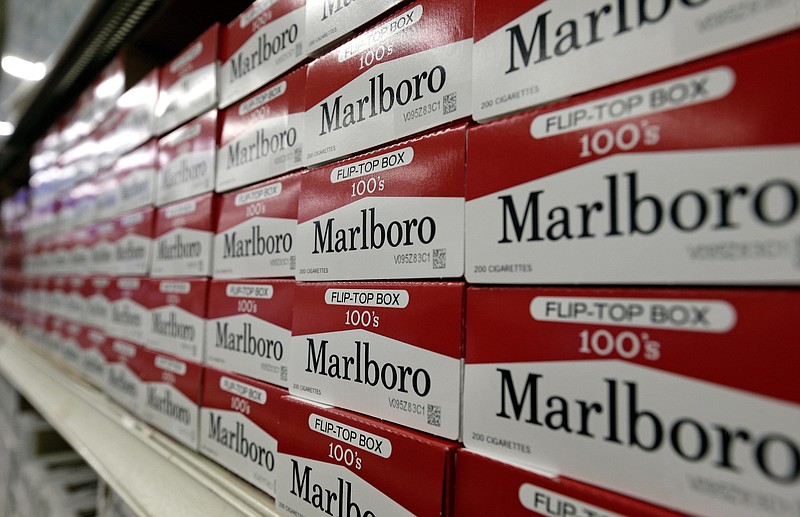Since Tennessee received $422 million in revenue in 2018 from the 1998 tobacco Master Settlement Agreement (MSA) and from tobacco taxes, we believe it still makes sense for the state to support tobacco control efforts in each county.
However, no money was requested for the Tennessee Department of Health's Tobacco Use Prevention and Control Program in 95 counties for fiscal 2019.
It's unclear why the program was zeroed out - from $6.2 million in fiscal 2018 - except a vague explanation that priorities are being re-examined and that Gov.-elect Bill Lee's administration deserves to have a hand in how the money is spent.
The Department of Health program received $20 million for tobacco control efforts from fiscal 2014 to fiscal 2018, and the state has received $3 billion in settlement funds from tobacco companies since 1998. The funds are to continue, according to settlement terms, "in perpetuity."
Although smoking rates for adults have dramatically dropped around the country and in Tennessee over the last 50 years, 22.1 percent of adults in the state - as of 2016 - smoke. Nationally, 17.1 percent of adults smoke.
However, and frighteningly, the rates for tobacco use by high school students are higher.
Where 3.2 percent of adults in the state used e-cigarettes in 2015, 11.5 percent of high school students did so in 2017. Where 2.8 percent of adults used smokeless tobacco in 2015, 7.3 percent of high school students did so in 2017. And where 2.2 percent of adults smoked cigars in 2015, 9.6 percent of high school students did so in 2017.
Much of the tobacco prevention program money is spent on youth, the idea being that they should not start smoking but if they start they should stop before their habit extends to their adult years.
The outreach to prevent youth from starting to smoke is one of three primary efforts of the state's Tobacco Use Prevention and Control Program. The two others are preventing smoking during pregnancy and reducing the exposure of children to second-hand smoke.
Evidence says the efforts pay off.
Smoking among eighth graders fell from 11.3 percent in 2011 to 6.1 percent in 2016, and pregnancy smoking fell from 15 percent in 2013 to 14 percent in 2015.
As of now, the state Tobacco Use Prevention and Control Program is soldiering on through a one-time additional allocation of $5 million in 2018 and by postponing or eliminating some of the projects originally planned for 2019.
Meanwhile, tobacco companies will spend $292.1 million annually to market their products in the Volunteer State.
However, officials say two staff positions at the Chattanooga-Hamilton County Health Department and its TNSTRONG youth smoking prevention program are at risk.
It's still 10 days until Gov-elect Lee is inaugurated, but the Chattanooga-Hamilton County Regional Health Council isn't waiting. It is drafting letters to him, to the incoming commissioner of health and to state legislators urging them to re-direct a portion of the settlement money back into anti-smoking programs.
Although we feel strongly the messages about smoking should continue to resonate with some of the settlement money, we know one thing: The message remains the same.
It's unhealthy to smoke. It's unhealthy for young people, it's unhealthy for pregnant women, it's unhealthy to be around second-hand smoke. And electronic cigarettes are nearly as bad.
The literature and the research have been around for decades. And newer information only supports the old.
What the Chattanooga-Hamilton County Health Department tells clients won't change, and youth still are likely to see numerous messages daily by the American Cancer Society, the American Lung Association, teen health groups, pregnancy health organizations and many other nonprofit groups urging them not to start smoking and to quit if they have started.
So if the program had to run on fumes while things are re-prioritized under the Lee administration, it could. And, after all, priorities, personnel, findings and needs change in government or quasi-government programs with limited or temporary funding. Like it or not, it's the way bureaucracies are.
Nevertheless, the 1998 tobacco MSA directed the tobacco companies to pay the 46 states in the lawsuit money for smoking-related health care costs and public health programs, though that designation was not legally constrained. So, in many states, the money goes directly into the general funds and is used for a variety of things other than health care. Indeed, only a handful of states fund tobacco-related programs at levels recommended by the Centers for Disease Control.
With that in mind, we think the Volunteer State - at the very least - should return to funding its Tobacco Use Prevention and Control Program at previous levels. A transparent accounting of how the MSA money is used would be appreciated, too. Indeed, if the money is being received "in perpetuity," shouldn't the money to combat smoking's health care costs be funded for the same time?
